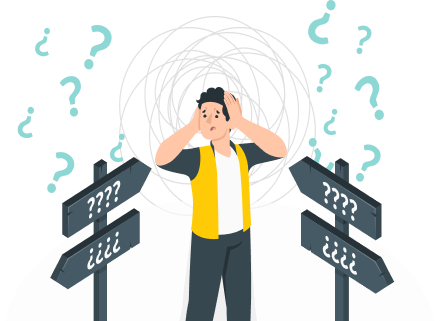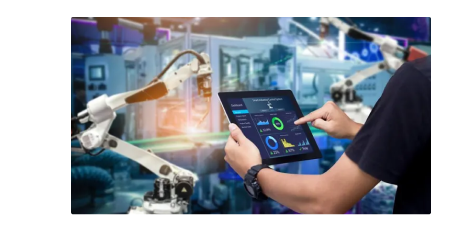#TakeCharge with #Aimshala
How make a career in Aerospace Simulation and Modeling Engineer
A career as an Aerospace Simulation and Modeling Engineer provides an exciting opportunity to contribute to the design and development of aircraft and spacecraft. This role typically requires a strong academic foundation in aerospace engineering, mechanical engineering, or a related field. A bachelor's degree is essential, followed by potential specialization through master's or doctoral programs. Practical experience gained through internships, co-op programs, or research projects is vital for enhancing employability. Networking with industry professionals and staying abreast of the latest simulation technologies and modeling practices are also crucial. With a combination of education, experience, and a passion for aerospace, one can build a rewarding career dedicated to advancing aerospace engineering.
Career in Aerospace Simulation and Modeling Engineer
What are the roles and responsibilities in Aerospace Simulation and Modeling Engineer?
- Developing Simulation Models : Aerospace Simulation and Modeling Engineers create and refine simulation models to predict the performance of aircraft and spacecraft under various conditions.
- Conducting Testing and Validation : They perform tests to validate simulation results against real-world data, ensuring accuracy and reliability in models.
- Collaborating with Design Teams : These engineers work closely with design teams to integrate simulation results into the design process, providing insights that inform engineering decisions.
- Optimizing Performance : They analyze simulation data to identify areas for improvement in design and performance, contributing to the development of more efficient aerospace systems.
- Documentation and Reporting : Aerospace Engineers document simulation processes and results, preparing reports for stakeholders and regulatory bodies.
What education is required to study Aerospace Simulation and Modeling Engineer
Check out the dates of the total number of candidates who have appeared in the CUET 2022 exam from the below table.
Stream |
Graduation |
After Graduation |
After Post Graduation |
|
|
Path 1 |
Completion of high school with a focus on math and science subjects. |
Bachelor of Science in Aerospace Engineering or related fields. |
Master's degree in Aerospace Engineering or specialized fields such as Computational Fluid Dynamics. |
Ph.D. in Aerospace Engineering for those pursuing research or academic careers. |
|
Path 2 |
Completion of high school with emphasis on engineering principles or vocational training. |
Bachelor's degree in Mechanical Engineering or related fields. |
Master's degree in Aerospace Engineering or related fields. |
Certifications in specialized simulation software or aerospace technologies. |

Feeling unsure about
your future?
Let's find the perfect career path for you!
with AI-powered career
guidance

What are the key skills required for Aerospace Simulation and Modeling Engineer
- Analytical Skills - These skills are crucial for interpreting simulation data and making informed engineering decisions.
- Communication Skills - Effective communication is vital for sharing simulation results with engineers, stakeholders, and regulatory bodies.
- Problem-Solving Skills - The ability to identify issues in aerospace designs and develop innovative solutions is essential for success.
- Technical Skills - Proficiency with simulation software and engineering tools is important for conducting analysis and modeling.
- Project Management Skills - Managing simulation projects efficiently, including budgeting and timelines, is key to successful outcomes in aerospace engineering.
What are the career opportunities in Aerospace Simulation and Modeling Engineer?
- Aerospace Engineer - Aerospace Engineers design and develop aircraft and spacecraft, focusing on performance, safety, and efficiency.
- Systems Engineer - Systems Engineers manage complex aerospace projects, ensuring all components work together effectively.
- Flight Test Engineer - Flight Test Engineers conduct tests on aircraft and spacecraft to evaluate performance and safety.
- Simulation Engineer - Simulation Engineers specialize in creating and implementing simulation models for various aerospace applications.
- Research Scientist - Research Scientists in aerospace focus on advancing technology through theoretical and experimental research.
What is the salary and demand for Aerospace Simulation and Modeling Engineer?
- Salary Overview - The typical salary for Aerospace Simulation and Modeling Engineers ranges from $70,000 for entry-level positions to over $130,000 for experienced professionals, with variations based on education and location.
- Regional Salary Variations - Salaries can vary significantly by region; for example, engineers in urban areas or regions with high aerospace activity may earn more than those in less active areas.
- Current Job Market Demand - The demand for Aerospace Engineers is growing due to advancements in aerospace technology and the increasing need for efficient air travel and space exploration.
- Future Demand Projections - Future demand for Aerospace Simulation and Modeling Engineers is expected to rise as technology advances and the aerospace industry continues to expand.
Leading companies for careers in Aerospace Simulation and Modeling Engineer

Boeing

Lockheed Martin

Northrop Grumman

Raytheon Technologies

Airbus

SpaceX

Blue Origin

General Dynamics
What are the best colleges for Aerospace Simulation and Modeling Engineer in India?
Undergraduate
College |
Location |
Website |
|
Indian Institute of Technology Bombay |
Mumbai |
https://www.iitb.ac.in |
|
Indian Institute of Technology Kanpur |
Kanpur |
https://www.iitk.ac.in |
|
Indian Institute of Technology Madras |
Chennai |
https://www.iitm.ac.in |
|
Indian Institute of Technology Kharagpur |
Kharagpur |
https://www.iitkgp.ac.in |
|
Punjab Engineering College |
Chandigarh |
https://pec.ac.in |
Postgraduate
College |
Location |
Website |
|
Indian Institute of Technology Bombay |
Mumbai |
https://www.iitb.ac.in |
|
Indian Institute of Science |
Bengaluru |
https://www.iisc.ac.in |
|
Indian Institute of Technology Kanpur |
Kanpur |
https://www.iitk.ac.in |
|
Indian Institute of Technology Madras |
Chennai |
https://www.iitm.ac.in |
|
Indian Institute of Technology Kharagpur |
Kharagpur |
https://www.iitkgp.ac.in |
What are the best colleges for Aerospace Simulation and Modeling Engineer in Abroad?
College |
Location |
Website |
|
Massachusetts Institute of Technology |
Cambridge, Massachusetts, USA |
https://www.mit.edu |
|
California Institute of Technology |
Pasadena, California, USA |
https://www.caltech.edu |
|
Georgia Institute of Technology |
Atlanta, Georgia, USA |
https://www.gatech.edu |
|
University of Michigan |
Ann Arbor, Michigan, USA |
https://www.umich.edu |
|
Imperial College London |
London, United Kingdom |
https://www.imperial.ac.uk |
What are the top entrance exams in India for pursuing a career in Aerospace Simulation and Modeling Engineer
College |
Tentative Date |
UG/PG |
Important Elements |
Website |
|
Indian Institute of Technology Bombay |
April |
Undergraduate |
Mathematics, Physics, and Chemistry. |
https://www.iitb.ac.in |
|
Indian Institute of Technology Kanpur |
May |
Undergraduate |
Mathematics, Physics, and Chemistry. |
https://www.iitk.ac.in |
|
Indian Institute of Technology Madras |
May |
Undergraduate |
Mathematics, Physics, and Chemistry. |
https://www.iitm.ac.in |
|
Indian Institute of Science |
January |
Postgraduate |
Engineering Mathematics, General Knowledge, and Analytical Skills. |
https://www.iisc.ac.in |
|
Georgia Institute of Technology |
March |
Postgraduate |
Mathematics, Engineering Science, and Analytical Skills. |
https://www.gatech.edu |
Pros & Cons of a Career in Aerospace Simulation and Modeling Engineer
Pros
- Aerospace Simulation and Modeling Engineers play a crucial role in advancing aviation technology, making their work impactful and fulfilling.
- The field offers competitive salaries, especially for those with advanced degrees and specialized skills.
- Professionals in this field contribute to innovations that enhance safety and efficiency in air travel and space exploration.
- The career provides opportunities for continuous learning and advancement in a rapidly evolving industry.
Cons
- The job can be demanding with long hours, especially during project deadlines or testing phases.
- Some roles may require extensive travel to testing sites or manufacturing facilities, which can be physically taxing.
- Funding uncertainties in aerospace projects can lead to job instability or limited resources.
- The work can sometimes be isolating, especially for those engaged in extensive simulation tasks away from team collaboration.
Did you find this information helpful?


Report
0 out of 0 found this helpful


